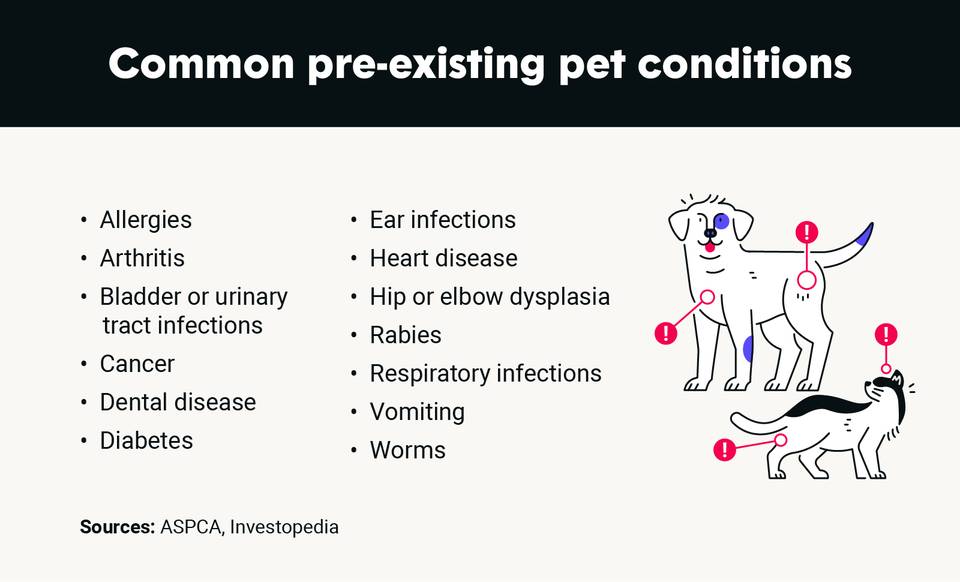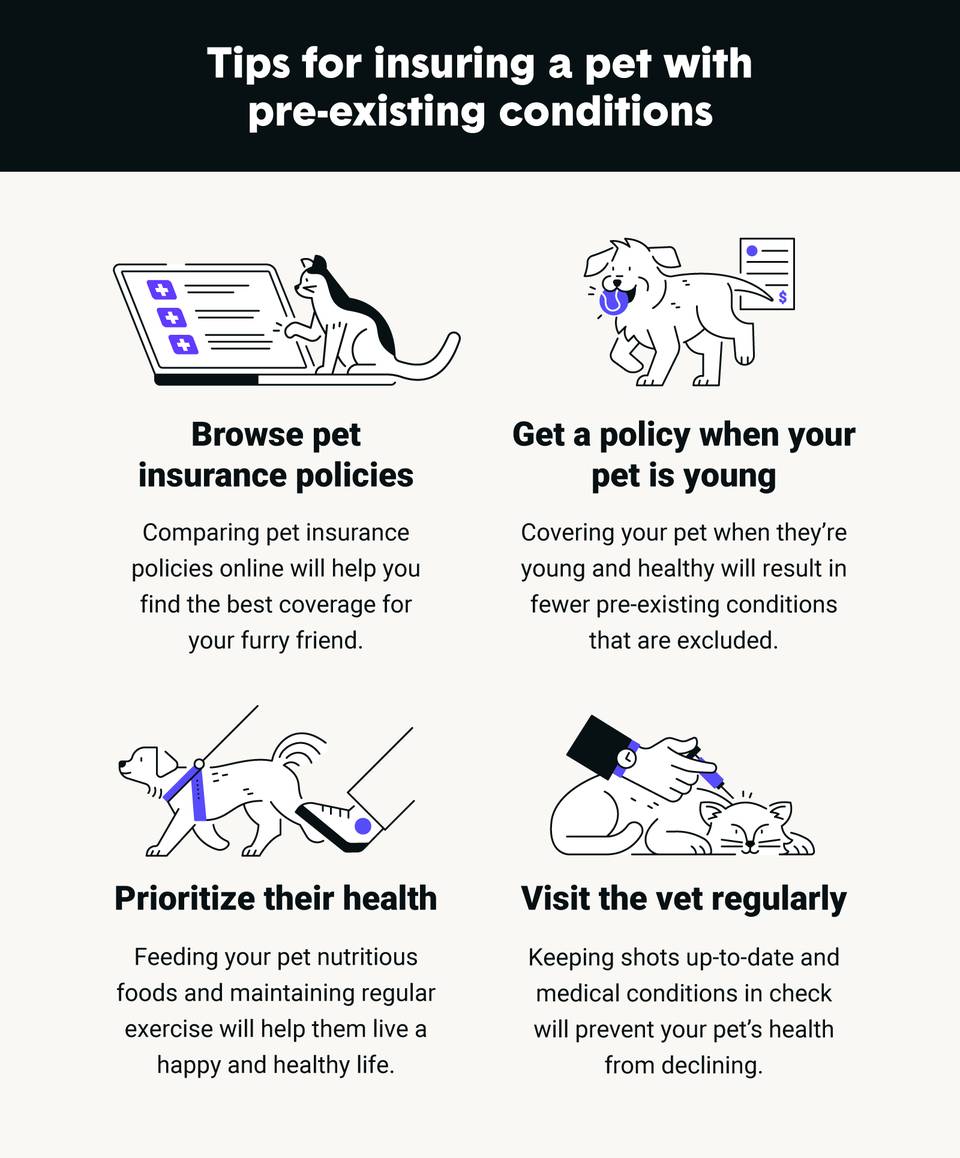Purchase when your pet is young and healthy
One of the best things you can do to safeguard your ability to care for your pet is to enroll in a pet insurance policy while they’re young. Younger animals tend to be healthier and are less likely to have as many pre-existing conditions. This can save you money down the line because your policy will provide coverage for whatever new health problems your pet may experience as it ages.
Visit the vet regularly
As a pet owner, it’s important that you schedule routine veterinary checkups. Making sure you’re regularly getting your pet looked at can help catch issues early. It’s also important to keep your pet up to date with necessary vaccinations that will keep them from getting sick and prevent your insurance company from denying a claim because your cat or dog was unvaccinated. Additionally, if your pet does come down with something, taking them in to get care immediately will help prevent any health conditions from getting worse and avoid any needless suffering for your animal.
Prioritize their health
Just as with humans, animals need nutritious food and regular exercise in order to stay healthy. For dogs, try introducing fruits, vegetables, whole grains and proteins that are packed with nutrients into their diet. Make sure to avoid dangerous foods for your pet and choose things your dog can safely eat like carrots, green beans, sweet potatoes, apples, bananas and blueberries. In addition to giving your dog healthy foods, regular exercise through walks and play can help combat any pre-existing conditions like diabetes and prevent obesity in your pet, which can increase what you pay for your pet insurance policy.
If you’re looking to switch up your cat’s diet, they can eat many of the same foods that are safe for dogs. Some good human foods to feed your feline friend are whole grains in very small amounts, cooked vegetables like broccoli and carrots and proteins like eggs and fish. Even if your cat seems to do just fine sleeping all day, exercise is still important. Some cats may enjoy being walked with a leash, but most cats can get the exercise they need through playtime. Bring out your kitty’s favorite toys and they’ll have fun while you keep them fit — pro tip: rotate cat toys to prevent boredom.







